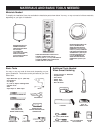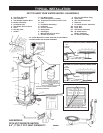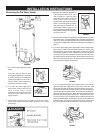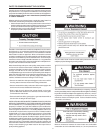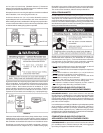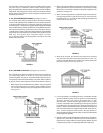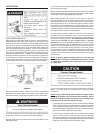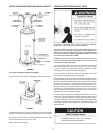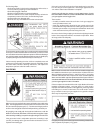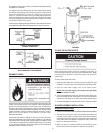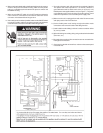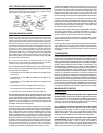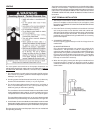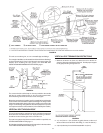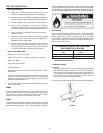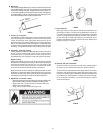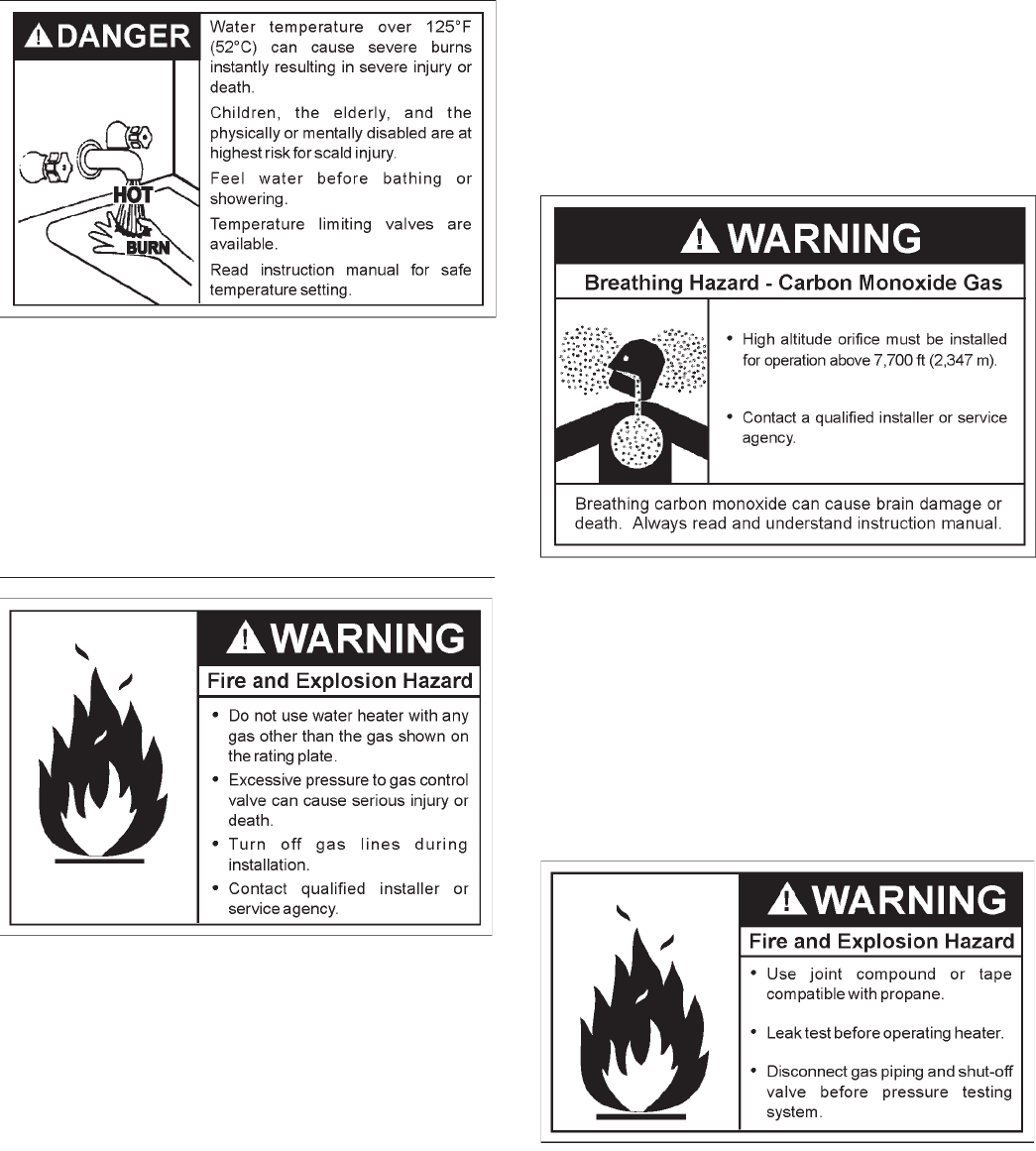
14
The Discharge Pipe:
• Shall not be smaller in size than the outlet pipe size of the valve, or
have any reducing couplings or other restrictions.
• Shall not be plugged or blocked.
• Shall be of material listed for hot water distribution.
•Shall be installed so as to allow complete drainage of both the
temperature-pressure relief valve, and the discharge pipe.
• Shall terminate at an adequate drain.
• Shall not have any valve between the relief valve and tank.
The temperature-pressure relief valve must be manually operated at least
once a year. Caution should be taken to ensure that (1) no one is in front
of or around the outlet of the temperature-pressure relief valve discharge
line, and (2) the water manually discharged will not cause any bodily injury
or property damage because the water may be extremely hot.
If after manually operating the valve, it fails to completely reset and
continues to release water, immediately close the cold water inlet to
the water heater, follow the draining instructions, and replace the
temperature-pressure relief valve with a new one.
GAS PIPING
Make sure the gas supplied is the same type listed on the model rating
plate. The inlet gas pressure must not exceed 14 inch water column (3.5
kPa) for natural and propane gas (L.P.). The minimum inlet gas pressure
shown on the rating plate is that which will permit firing at rated input.
All gas piping must comply with local codes and ordinances or with the
National Fuel Gas Code (ANSI Z223.1/ NFPA-54) whichever applies. Copper
and brass tubing and fittings (except tin lined copper tubing) shall not be used.
If the gas control valve is subjected to pressures exceeding 1/2 psi
(3.5 kPa), the damage to the gas control valve could result in a fire or
explosion from leaking gas.
If the main gas line Shut-off serving all gas appliances is used, also
turn “off” the gas at each appliance. Leave all gas appliances shut
“off” until the water heater installation is complete.
A gas line of sufficient size must be run to the water heater. Consult
the current edition of National Fuel Gas Code ANSI Z223.1/NFPA 54 and
your gas supplier concerning pipe size.
There must be:
• A readily accessible manual shut off valve in the gas supply line
serving the water heater, and
• A drip leg (sediment trap) ahead of the gas control valve to help
prevent dirt and foreign materials from entering the gas control valve.
• A flexible gas connector or a ground joint union between the shut off
valve and control valve to permit servicing of the unit.
Be sure to check all the gas piping for leaks before lighting the water
heater. Use a soapy water solution, not a match or open flame. Rinse
off soapy solution and wipe dry.
Water heaters covered in this manual have been tested and approved
for installation at elevations up to 7,700 feet (2,347 m) above sea level.
When installed at elevations above 7,700 feet (2,347 m), input rating
should be reduced at the rate of 4 percent for each 1,000 feet (
305 m)
above sea level which requires replacement of the burner orifice in
accordance with National Fuel Gas Code ANSI Z223.1/NFPA 54. Contact
your local gas supplier for further information.
Failure to replace the standard orifice with a high altitude orifice when
installed at elevations above 7,700 feet (2,347 m) could result in
improper and inefficient operation of the appliance, producing carbon
monoxide gas in excess of safe limits. This could result in serious
injury or death. Contact your gas supplier for any specific changes
which may be required in your area.
Use pipe joint compound or teflon tape marked as being resistant to the
action of petroleum [Propane (L.P.)] gases.



